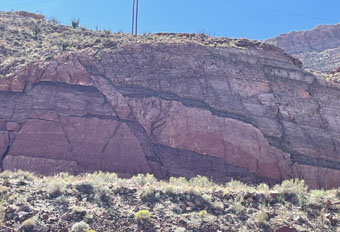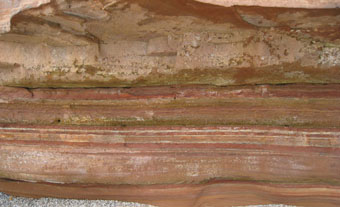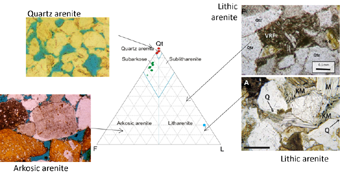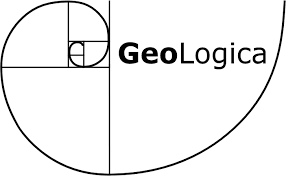Trap and Seal Analysis: Theory and Application

Date: 23-26 June 2025
Location: Houston
Duration: 4 Days
Tutor: Russell K. Davies, Redlands Fault Geological Consulting LLC
This course introduces the concepts and methods in trap and seal analysis, particularly in relation to fault characterization, including fault mapping and fault seal, as applied to cross-fault flow resistance in traps for hydrocarbons and carbon containment in subsurface reservoirs. The course additionally includes the analysis of caprock (top seal) for predicting seal capacity and evaluating risks associated with capillary and mechanical controls. Overall, the course emphasizes the importance of an integrated approach to trap and seal analysis in subsurface reservoirs. The lectures introduce fundamentals and advanced concepts for faulting and flow for the prediction of fault behavior in subsurface traps and the concepts discussed are applied in simple exercises to reinforce learning.
You will learn to:
- Analyze fault geometries and architecture, apply this knowledge to make robust fault interpretations.
- Assess fault rock types and properties and likely impacts on fluid flow across and along faults.
- Conduct juxtaposition seal analysis and employ triangle diagrams.
- Apply algorithms, such as SGR and CSF, for predicting clay contents across faults.
- Assess the relationship between threshold pressure and fault seal capacity against the clay content predicted across fault surfaces.
- Characterize faults as potential migration and leakage pathways.
- Evaluate the geomechanical and capillary properties of top seal units.
Seals, Containment and Risk for CCS and Hydrogen Storage

Date: 13 - 17 Oct 2025
Location: Virtual
Duration: 5 Days
Tutor: Richard Swarbrick: Manager, Swarbrick GeoPressure
This course examines the nature and properties of seals as they relate to containment for permanent storage of CO2 and cyclical storage of hydrogen and/or compressed air. The course will provide a grounding in the geomechanics of seals and how seals and their properties are created in the subsurface. While most data and analysis relating to seals has been acquired from and applied to the containment of oil and gas, this course will show how such data can be applied to CCS and gas storage. Particular attention will be given to the different sealing requirements of CO2 and hydrogen relative to oil/gas and water.
You will learn to:
- Evaluate the nature of containment seals and their properties in the deep earth (>1km/0.62 miles below surface).
- Apply knowledge of seal integrity to estimates of column heights and associated storage volumes.
- Assess the concepts of seal integrity and how to predict risk of seal breach/failure.
- Appraise current knowledge of seal behaviour using case studies.
- Manage the requirements for permanent CO2 storage using CCS versus short-term/cyclic storage for hydrogen air.
- Characterize data requirements and limitations to assess seal integrity and risk (data sourced mainly from oil/gas boreholes).
- Evaluate different trapping requirements for gas storage (currently data-poor) relative to oil/gas (historically data-rich).
- How geochemical fluid-rock reactivity may impact seals to gas storage over time.
Geochemical effects of CO2 on Reservoir, Seals and Engineered Environments during CCS

Date: 20 - 24 Oct 2025
Location: Virtual
Duration: 5 Days
Tutor: Richard Worden, Professor in the Department of Earth Ocean and Ecological Sciences, University of Liverpool, UK
The geochemistry of saline aquifers, depleted oil/gas fields in the context of CO2, and other waste gas, injection is considered. The reactions of CO2 with different reservoir rocks and top-seals, and their constituent minerals, and the cement and metal work used in the construction of wells are central to this course. The course includes reference to numerous CCS and CO2-EOR case studies, CCS-pilot sites, experiments, geochemical modelling, reaction-transport modelling, monitoring of CCS sites, microbiological processes in CCS systems, and the risk of halite scale formation.
You will learn to:
- Appraise the types and sources of information needed to define geochemical aspects of CCS sites.
- Evaluate the role of CO2 pressure in influencing reactions at CCS sites.
- Assess the information that can be gathered from natural analogues of CCS projects.
- Evaluate the role of composition of the injected gas (role of contaminants) in influencing reactions at CCS sites.
- Gauge the role of water composition in influencing reactions at CCS sites.
- Characterize the role of mineral composition (rock type) in influencing reactions at CCS sites.
- Manage examples of mineral dissolution in CCS systems.
- Predict possible examples of mineral precipitation in CCS systems.
- Gauge CO2 interaction with cements and pipes used in well completions.
- Assess how experimental simulation, geochemical reaction modelling and reaction transport modelling can help predict if dissolution or precipitation will occur.
- Validate the links between geochemical processes and geomechanical and petrophysical properties in CCS systems.
- Use geochemical tracers to track process in CCS systems.
- Characterize the microbiological processes that may occur at CCS sites.
- Predict the geochemical formation damage in CCS.
- Quantify the role of CCS in basalt hosts in comparison to sedimentary hosts.
KeyFacts Energy Industry Directory: GeoLogica l KeyFacts Energy news: Training
 KEYFACT Energy
KEYFACT Energy
